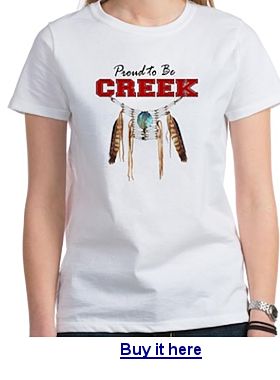State Tribes Q-S
An alphabetical list of state recognized tribes of the United States Q to S. Links to tribal profile pages are at the bottom of the page.
State Recognized indian tribes that start with Q
State Recognized indian tribes that start with R
Ramapough Lunape Nation (NJ)
Ramapough Mountain Indians 189 Stag Hill Rd Mahwah, NJ 07430 201-529-1171
Rappahannock (VA)
State Recognized indian tribes that start with S
Salinan Tribe of Montery and San Louis Obisbo Counties
Santee Indian Organization (SC)
Sappony (NC)
Schaghticoke Tribal Nation (CT)
Shasta Indian Nation (CA)
Star Clan of Muscogee Creeks (AL)
Schaghticoke Indian Tribe 601 Main St Monroe, CT 06468 203-459-2531
Shinnecock Tribe Rte. 27-A, Montauk Highway Southampton, NY 11968 (516) 283-9266
Star Clan of Muskogee Creeks of Pike County P.O. Box 126 Goshen, AL 36035 334-484-3589
Article Index:
According to archeological digs, the Salinan people have occupied the Central Coast and inland areas of Calfornia for 10,000 years. Also known as the Antoniaño, this state recognized indian tribe has over 700 members.
Official Tribal Name: Salinan Tribe of Montery and San Louis Obisbo Counties
Address:
Phone: 805-464-2650
Fax: 805-464-2651
Email: info@salinantribe.com
Official Website:http://salinantribe.com
Recognition Status: State Recognized
Traditional Name / Traditional Meaning:
Tepotaha – meaning The People
Common Name / Meaning of Common Name:
Alternate names / Alternate spellings:
Santa Margarita Rancho, Antoniaño
Name in other languages:
Region: California Region
State(s) Today: California
Traditional Territory:
Confederacy:
Treaties:
Reservations:
Land Area:
Tribal Headquarters:
Time Zone:
Population at Contact:
Registered Population Today:
Over 700 members, 80% of whom still live in their traditional territory.
Tribal Enrollment Requirements:
Genealogy Resources:
Government:
Charter:
Name of Governing Body: Tribal Council
Number of Council members: 14
Dates of Constitutional amendments:
Number of Executive Officers:
Elections
Language Classification:
Hokan
Language Dialects:
Number of fluent Speakers:
Dictionary:
Origins:
According to archeological digs, the Salinan people have occupied the Central Coast and inland areas of Calfornia for 10,000 years.
Bands, Gens, and Clans
Related Tribes:
Traditional Allies:
Traditional Enemies:
Ceremonies / Dances:
Modern Day Events & Tourism:
Legends / Oral Stories:
Art & Crafts:
Animals:
Clothing:
Housing:
Subsistance:
Economy Today:
Religion & Spiritual Beliefs:
Burial Customs:
Wedding Customs
Radio:
Newspapers:
Chiefs & Famous People:
Catastrophic Events:
Tribe History:
In the News:
Further Reading:
Brief summary.
Official Tribal Name: Star Clan of Muscogee Creeks
Address:
Phone:
Fax:
Email:
Official Website:
Recognition Status: Federally Recognized
Traditional Name / Traditional Meaning
Common Name / Meaning of Common Name:
Alternate names / Alternate spellings / Mispellings:
Name in other languages:
Region: Southeastern
State(s) Today:
Traditional Territory:
Confederacy: Muscogee
The Muscogee were not one tribe but a union of several. This union evolved into a confederacy that was the most sophisticated political organization north of Mexico. Member tribes were called tribal towns. Within this political structure, each tribal town maintained political autonomy and distinct land holdings.
The confederacy was dynamic in its capacity to expand. New tribal towns were born of “Mother towns” as populations increased. The confederation was also expanded by the addition of tribes conquered by towns of the confederacy, and, in time, by the incorporation of tribes and fragments of tribes devastated by the European imperial powers. Within this confederacy, the language and the culture of the founding tribal towns became dominant.
Treaties:
Reservations:
Land Area:
Tribal Headquarters:
Time Zone:
Population at Contact:
Registered Population Today:
Tribal Enrollment Requirements:
Genealogy Resources:
Black Creeks adopted through the Dawes Commission between 1898 and 1916
Government:
Charter:
Name of Governing Body:
Number of Council members:
Dates of Constitutional amendments:
Number of Executive Officers:
Elections:
Language Classification:
Language Dialects:
Number of fluent Speakers:
Dictionary:
Origins:
Bands, Gens, and Clans
Related Tribes:
- Alabama-Coushatta Tribe (Texas) (F)
- Alabama-Quassarte Tribal Town (Oklahoma) (F)
- Alibamu Indians
- Chattahoochee Creeks
- Cher-O-Creek Intra Tribal Indians (S)
- Coushatta Tribe of Louisiana (Louisiana)
- Creek Freedmen
- Kialegee Tribal Town (Oklahoma) (F)
- Lower Muskogee Creek Tribe (East of the Mississippi) (S)
- Machis Lower Creek Indian Tribe (Alabama) (S)
- Mississippian Moundbuilders
- Muscogee (Creek) Nation (Oklahoma) (F)
- Ochese Creeks
- Poarch Band of Creek Indians of Alabama (F)
- Star Clan of Muscogee Creeks (Alabama) (S)
- Thlopthlocco Tribal Town (F)
- Also see Creek Tribes
The Seminole were originally part of the Muscogee tribes.
Traditional Allies:
Traditional Enemies:
Ceremonies / Dances:
Modern Day Events & Tourism:
Legends / Oral Stories:
Art & Crafts:
Animals:
Clothing:
Adornment:
Housing:
Subsistance:
Economy Today:
Religion & Spiritual Beliefs:
Burial Customs:
Common rituals included:
- Conducting a wake service the night before burial;
- Never leaving the body alone before burial;
- Enclosing personal items and food in the casket;
- Digging graves by hand;
- Each individual throwing a handful of dirt into the grave before covering, called giving a “farewell handshake”;
- Covering the grave completely by hand;
- Building a house over the grave;
- Waiting 4 days before burial;
- Using medicine/purification; and
- Adhering to a socialized mourning period.
Burial customs practiced by Creek Freedmen
Wedding Customs:
Tribal College: College of the Muscogee Nation
Radio:
Newspapers:
Muscogee Creek Chiefs and Leaders
Catastrophic Events:
Tribe History:
In the News:
Further Reading:


